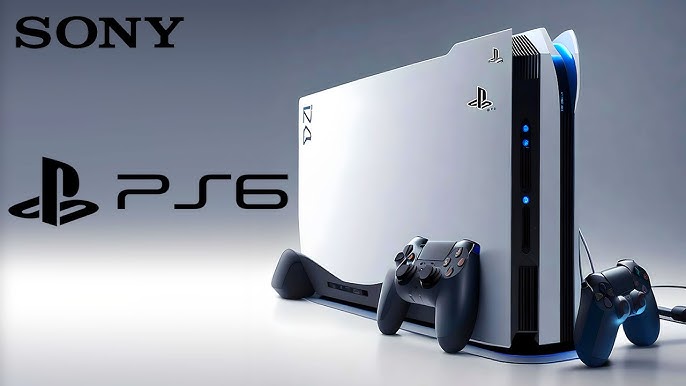
As the PlayStation 5 Pro continues to dominate the gaming market, excitement is already building for the PlayStation 6 (PS6), Sony’s highly anticipated next-gen console. Leaks have shed light on several key details, including the continued partnership between Sony and AMD for the PS6’s chipset, ensuring backward compatibility with previous PlayStation models. This move not only strengthens Sony’s hardware capabilities but also highlights the company’s commitment to keeping gamers’ existing libraries accessible on future consoles.
In this article, we’ll explore the latest details on the PlayStation 6, focusing on the significance of AMD’s involvement, backward compatibility features, and what gamers can expect from the future of console gaming.
Why Sony Chose AMD Again: Legacy and Backward Compatibility
The decision to stick with AMD as the supplier for the PlayStation 6 chipset is a strategic one. AMD has provided the hardware for both the PlayStation 4 and PlayStation 5, allowing Sony to ensure a smooth transition between console generations. This continued partnership guarantees backward compatibility across the PS4, PS5, and now the PS6, giving gamers the ability to play their favorite older titles without the need to repurchase games or rely on cloud-based solutions.
According to insiders cited by Reuters, switching to Intel was considered during negotiations, but doing so could have complicated backward compatibility. A change in chip architecture would have required additional engineering resources to ensure that older PlayStation games worked seamlessly on the new hardware. By sticking with AMD, Sony has chosen to prioritize consistency, ensuring that gamers’ investments in previous titles remain valuable as they upgrade to the latest hardware.
Backward Compatibility: The Key to PS6’s Success
For many gamers, backward compatibility is more than a convenience—it’s a crucial factor in deciding whether to upgrade to a new console. While cloud-based gaming has gained popularity in recent years, playing games directly on the console still offers a superior experience in terms of latency and performance. The PlayStation 6 is expected to support a vast library of PS4 and PS5 titles, which will be a game-changer for players who want to keep enjoying their existing collections without sacrificing performance.
Sony’s focus on backward compatibility also helps set the PS6 apart from previous generations. When the PlayStation 5 launched, backward compatibility was somewhat limited, with the console only fully supporting PS4 games. With the PS6, there is a strong possibility that Sony will expand this capability, making it the most comprehensive backward-compatible PlayStation console yet.
AMD’s Role in Securing the PS6 Future
One of the critical factors in AMD securing the PS6 contract is their proven track record with custom GPUs and processors tailored for gaming. Reuters reported that AMD’s ability to offer affordable, high-performance solutions played a pivotal role in Sony’s decision to continue the partnership. Not only does this keep costs manageable for Sony, but it also allows the PS6 to push the envelope when it comes to gaming performance.
AMD’s deep expertise in AI technologies and ray tracing will likely feature heavily in the PS6 architecture. This will enable the console to deliver stunning graphics and advanced in-game physics, making it a significant leap forward in terms of realism and immersion.
Intel’s Missed Opportunity and the Future of Gaming
Intel’s inability to secure the PlayStation 6 contract is part of a broader challenge the company has faced in recent years. Despite initially being in the running, Intel was ultimately sidelined due to pricing disagreements and their lack of expertise in gaming-specific chipsets compared to AMD. This missed opportunity adds to Intel’s ongoing struggles to compete with AMD and Nvidia in the gaming and AI markets.
By continuing to partner with AMD, Sony is positioning the PS6 as not only a backward-compatible powerhouse but also a console that will leverage the latest AI advancements, offering a richer and more dynamic gaming experience. As gaming evolves, AI is becoming increasingly important in creating more immersive, interactive, and intelligent gaming worlds.
The Future of PlayStation: What’s Next?
The PlayStation 6 is still in its development phase, with a release date expected sometime after 2025. However, the early leaks and decisions surrounding the console’s hardware and backward compatibility have already set the stage for a promising future. Sony’s decision to prioritize backward compatibility and stick with AMD signals a commitment to providing a seamless transition for gamers while ensuring the PS6 pushes the boundaries of what a gaming console can achieve.
For those wondering what comes next, the PS6 promises to be a blend of cutting-edge performance, enhanced AI features, and long-term support for previous game generations. While details on specific hardware features and launch titles are still scarce, the foundation being laid with AMD’s continued involvement bodes well for the future of console gaming.
In the years ahead, gamers can expect the PlayStation 6 to deliver an experience that builds on the success of the PS5 while adding next-gen capabilities that take gaming to new heights.
Dan Warren was a reporter for Freeze Wall, before becoming an editor. Dan has previously worked for Wired, MacWorld, Tech Crunch, and VentureBeat covering countless stories concerning all things related to tech and science. Dan studied at the New Jersey Institute of Technology.






